HAZARD PICTOGRAMS: what it is
According to the Globally Harmonized System of Classification and Labelling of Chemicals (GHS) developed by the United Nations, a hazard pictogram is a graphical composition that includes a symbol and other graphic elements such as a border, background patterns, and colors.
GHS hazard pictograms have a diamond shape (a square on a point) with a red border containing a black hazard picture on a white background.
HAZARD PICTOGRAMS: why it is needed
GHS pictograms have been adopted and implemented worldwide in different local regulations including EU CLP regulation (EC) No. 1272/2008.
They are a required component on the label and safety data sheet (SDS) of a hazardous substance or mixture to visually convey specific information about the hazards that the substance or mixture can cause to human health and/or the environment.
In practice, pictograms help workers and users in the supply chain quickly recognize the hazards linked to the product they are handling or using so that they can act properly. As a visual communication element, a pictogram is significantly effective in sending warnings to its audiences and getting their immediate attention.
Therefore, to ensure the compliance and the meaning of SDSs and labels, it is critical to properly apply hazard pictograms which:
- are up to date (as certain pictograms are obsolete and have been replaced)
- follow all graphical requirements
- correctly reflect the hazard properties of the substance or mixture
- are in alignment with other elements of the SDS and labels such as warning words, hazard classes & categories, hazard statements, and precaution statements.
- are displayed in the correct sections of the SDS and labels
If you are not quite sure, let our experts handle this task.

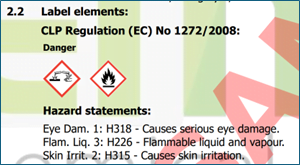
GHS HAZARD PICTOGRAMS: symbols, description, and meaning
There are 03 groups of hazard pictograms:
- Physical hazard pictograms: with code GHS01, GHS02, GHS03, GHS04, GHS05
- Health hazard pictograms: with code GHS05, GHS06, GHS07, GHS08
- Environmental hazard pictograms: with code GHS09

- Code: GHS01
Symbol: Exploding bomb
Description: Explosive
- Meaning(s)
- Unstable explosive
- Explosive; mass explosion hazard
- Explosive; severe projection hazard
- Explosive; fire, blast, or projection hazard
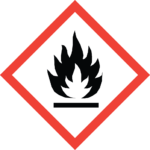
- Code: GHS02
- Symbol: Flame
- Description: Flammable
- Meaning(s):
- Extremely flammable gas
- Flammable gas
- Extremely flammable aerosol
- Flammable aerosol
- Highly flammable liquid and vapour
- Flammable liquid and vapour
- Flammable solid

- Code: GHS03
- Symbol: Flame over circle
- Description: Oxidising
- Meaning(s):
- Oxidiser. May cause or intensify fire
- Strong oxidizer. May cause fire or explosion.
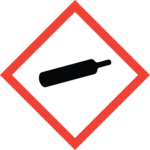
- Code: GHS04
- Symbol: Gas cylinder
- Description: Gas under pressure
- Meaning(s):
- Contains gas under pressure, may explode if heated
- Contains refrigerated gas, and may cause cryogenic burns or injury.
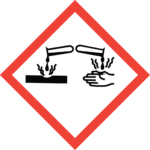
- Code: GHS05
- Symbol: Corrosion
- Description: Corrosive
- Meaning(s):
- May be corrosive to metals
- Causes severe skin burns and eye damage

- Code: GHS06
- Symbol: Skulls and Crossbones
- Description: Acute toxicity
- Meaning(s):
- Fatal if swallowed
- Fatal in contact with skin
- Fatal if inhaled
- Toxic: if swallowed
- Toxic in contact with skin
- Toxic if inhaled
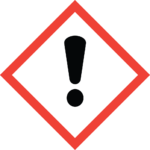
- Code: GHS07
- Symbol: Exclamation mark
- Description: Health hazard or Hazardous to the ozone layer
- Meaning(s):
- May cause respiratory irritation
- May cause drowsiness or dizziness
- May cause an allergic skin reaction
- Causes serious eye irritation
- Causes skin irritation
- Harmful if swallowed
- Harmful in contact with skin
- Harmful if inhaled
- Harms public health and the environment by destroying ozone in the upper atmosphere

- Code: GHS08
- Symbol: Health hazard
- Description: Serious health hazard
- Meaning(s):
- May be fatal if swallowed and enters airways
- Causes damage to organs
- May cause damage to organs
- May damage fertility or the unborn child
- Suspected of damaging fertility or the unborn child
- May cause cancer
- Suspected of causing cancer
- May cause genetic defects
- Suspected of causing genetic defects
- May cause allergy or asthma symptoms or breathing difficulties if inhaled

- Code: GHS09
- Symbol: Environment
- Description: Hazardous to the environment
- Meaning(s):
- Very toxic to aquatic life with long-lasting effects
- Toxic to aquatic life with long-lasting effects




